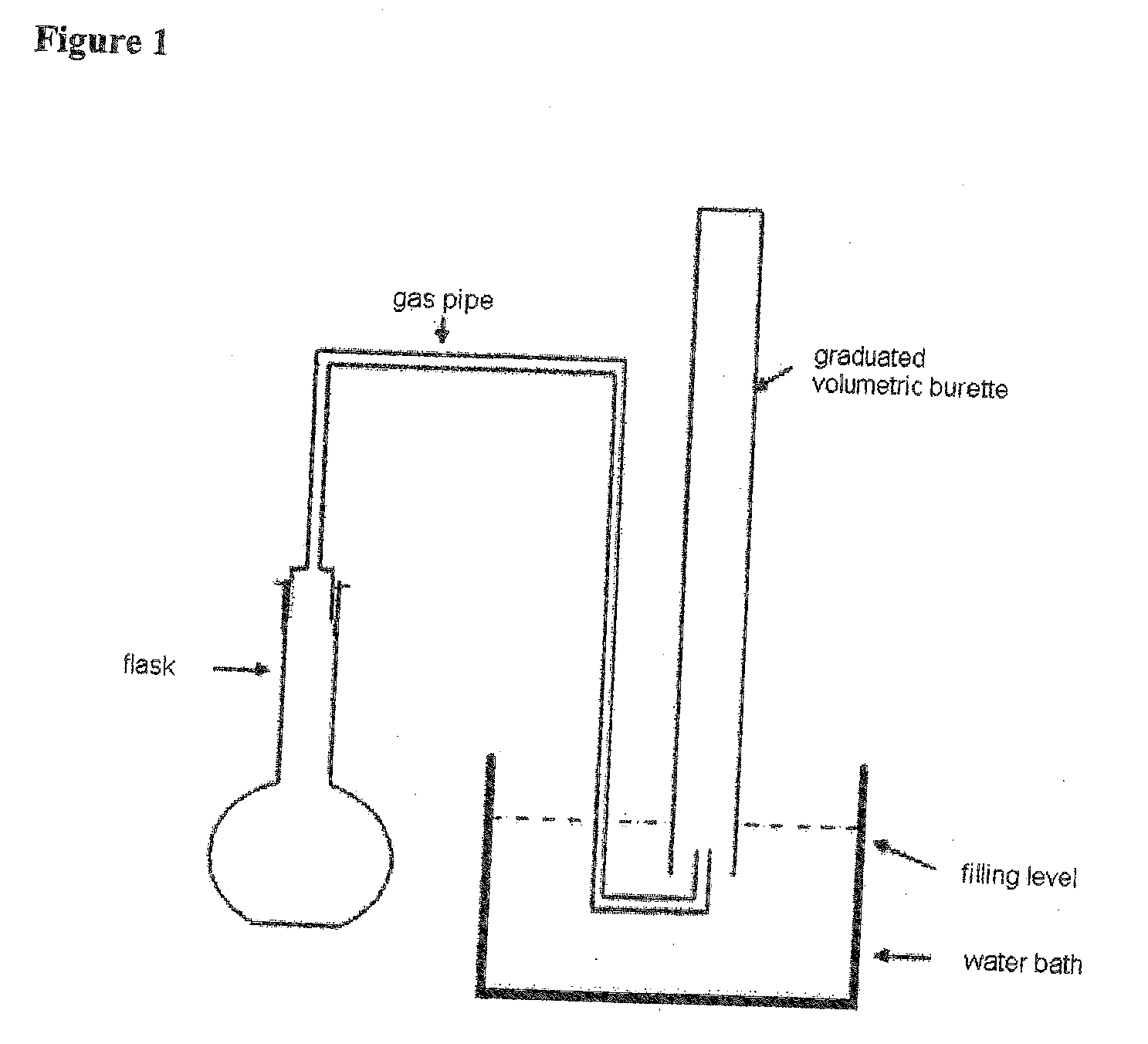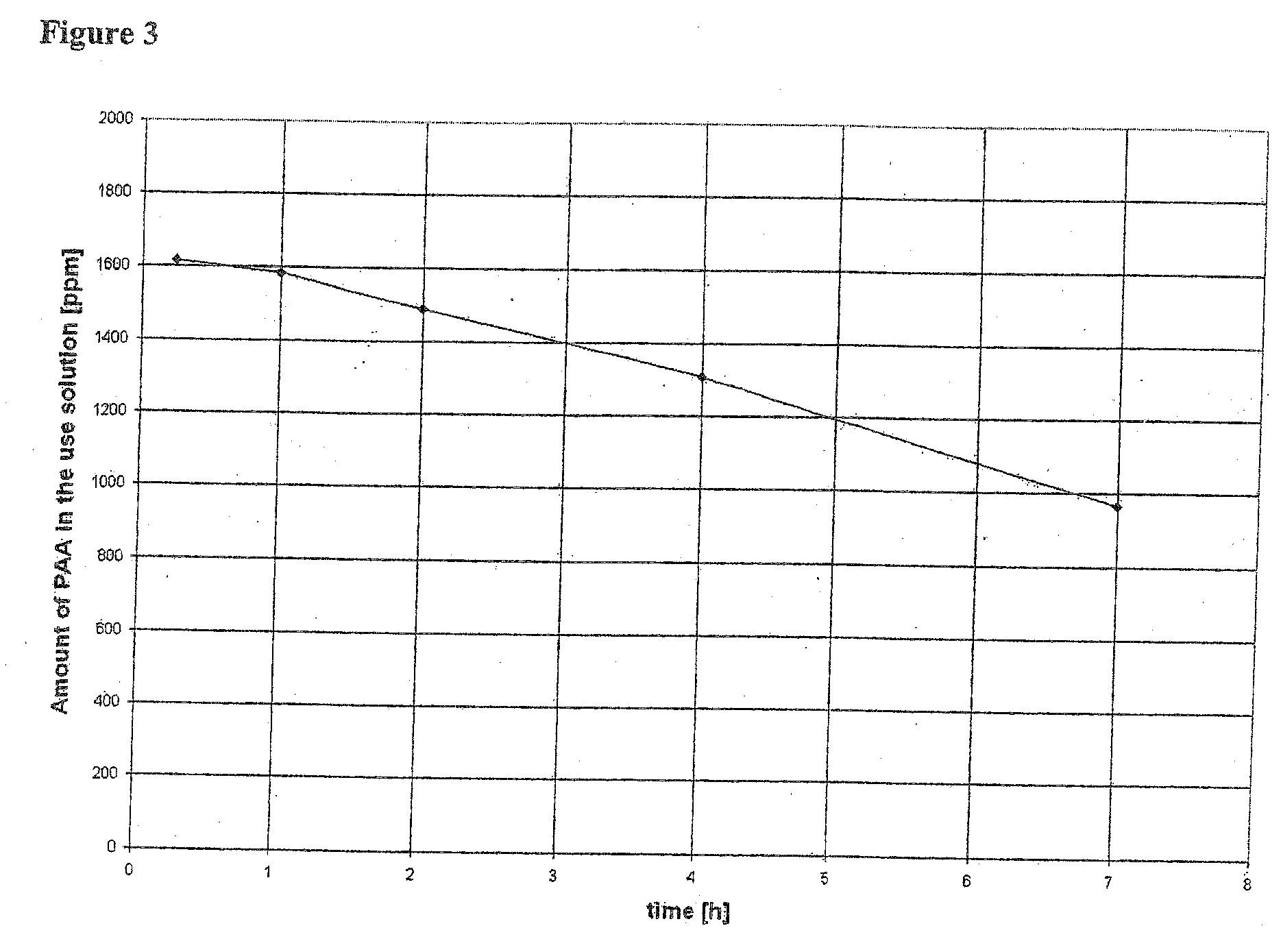Granular cleaning and disinfecting composition
a technology of cleaning and disinfecting composition and granular structure, applied in the direction of biocide, detergent compounding agent, foam regulating composition, etc., to achieve the effect of reducing gas formation
- Summary
- Abstract
- Description
- Claims
- Application Information
AI Technical Summary
Benefits of technology
Problems solved by technology
Method used
Image
Examples
example 1
Preparation of Granular Compositions
[0077]Compositions 1, 2, and 3 were prepared by mixing the components listed in Table 1.
[0078]Compositions 1 and 2 are specific embodiments of the present invention, while composition 3 is a reference composition containing essentially the same components as composition 2, except that no phosphonate was added. The missing phosphonate was balanced with sodium carbonate.
TABLE 1Composition 3CompositionComposition(reference12composition)Coated sodium carbonate40-5010-2010-22peroxyhydrateSodium tripolyphosphate—40-5040-50Solid non-ionic surfactant1-31-31-3Sodium carbonate2-510-2010-20Tetrasodium (1-0.5-2 0.5-2 —hydroxyethylidene)biphosphonateCorrosion inhibitor0.5-2 0.5-2 0.5-2 Coated granular TAED20-2512-1812-18Liquid oxo alcohol EO-PO-0.5-2 ——adductPerfume0.01-0.2 ——Sodium bicarbonate1-3——Citric acid anhydrate12-18——All amounts listed in Table 1 are given in wt %
[0079]A 2 wt % use solution obtained from dissolving 20 g of composition 1 in 980 g...
example 2
[0080]The particle size distribution of compositions 1 and 2 was determined by sieve analysis using an analytical sieving machine type LAVIB S+52 (Siebtechnik GmbH, Mülheim a. d. Ruhr). A set of five sieves with a mesh size of 1.6, 0.8, 0.4, 0.2, and 0.1 mm, respectively, was used. The sieves were arranged in descending mesh size. Exactly 100 g of the granular composition 1 or 2, respectively, were carefully loaded onto the uppermost sieve (mesh size 1.6 mm), then the set of sieves was closed and was vibrated for 120 seconds. Afterwards the residue amount held back on each sieves was rated. For each composition sieve analysis was carried out twice.
[0081]Table 2 gives the particle-size distribution of compositions 1 and 2 in weight percent as an average of two measurements.
TABLE 2Composition 1Composition 2Sieve [mm]residue [wt %]residue [wt %]00.52.10.16.711.10.26.321.40.44550.90.841.215.31.60.60.1
example 3
[0082]The bulk density of compositions 1 and 2 respectively was determined according to DIN ISO 697 and DIN 53466. Composition 1 has a bulk density of 800 g / L, while the bulk density of composition 2 is 900 g / L.
PUM
 Login to View More
Login to View More Abstract
Description
Claims
Application Information
 Login to View More
Login to View More - R&D
- Intellectual Property
- Life Sciences
- Materials
- Tech Scout
- Unparalleled Data Quality
- Higher Quality Content
- 60% Fewer Hallucinations
Browse by: Latest US Patents, China's latest patents, Technical Efficacy Thesaurus, Application Domain, Technology Topic, Popular Technical Reports.
© 2025 PatSnap. All rights reserved.Legal|Privacy policy|Modern Slavery Act Transparency Statement|Sitemap|About US| Contact US: help@patsnap.com



